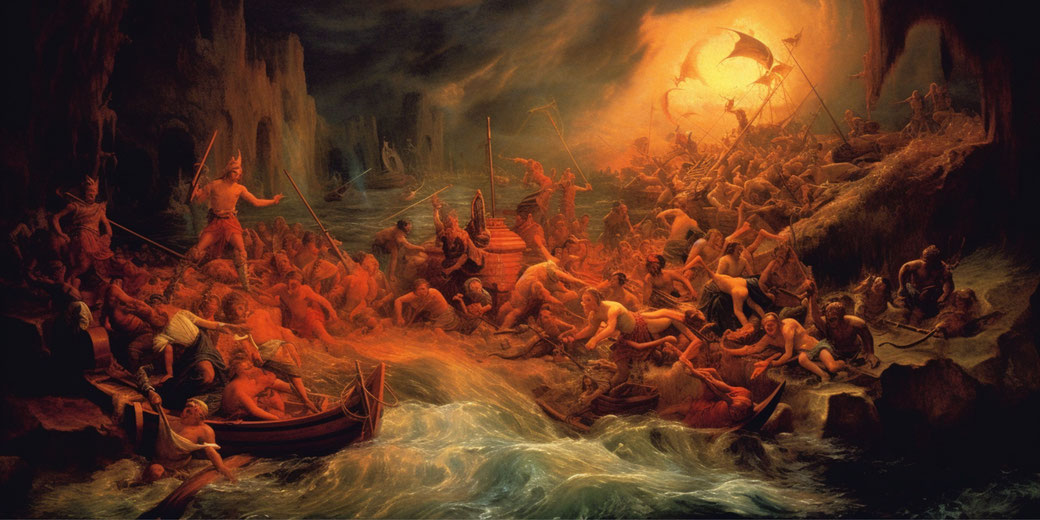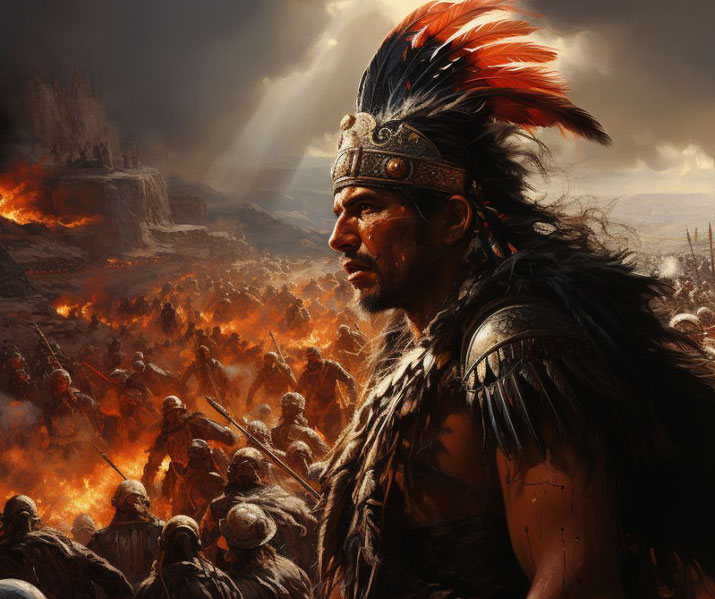La Noche Triste: The bloody night that changed the Aztec Empire forever

La Noche Triste took place on June 30, 1520, when the Spanish conquistador Hernán Cortés and his forces attempted to escape from the Aztec capital, Tenochtitlán, under the cover of darkness.
Their discovery by the Aztecs led to a fierce battle that resulted in heavy casualties for the Spanish. This event, however, was more than just a military confrontation.
It was a clash of cultures, a moment of reckoning, and a prelude to the profound transformations that were to come.
When worlds collide
La Noche Triste took place during the period of the Spanish conquest of the Americas, a time marked by exploration, exploitation, and violent conflict.
The key figures in this narrative are the Spanish conquistadors, led by Hernán Cortés, and the Aztecs, one of the most powerful and sophisticated civilizations in pre-Columbian America.
The Spanish conquest was driven by a combination of factors, including the thirst for wealth, the desire for glory, and the ambition to spread Christianity.
Hernán Cortés, a man of considerable courage and cunning, was at the forefront of this endeavor.
He arrived on the Mexican coast in 1519 with a small force of men, but with grand visions of conquest and conversion.
Little did he know that he was about to encounter a civilization of extraordinary complexity and power.
The Aztec Empire, with its capital at Tenochtitlán, was a marvel of engineering, culture, and governance.
Built on an island in the middle of Lake Texcoco, the city was a testament to Aztec ingenuity, featuring grand temples, bustling markets, and intricate canals.
The Aztecs had a sophisticated social structure, a rich pantheon of gods, and a formidable military.
At the helm of this empire was Moctezuma II, an emperor who would play a pivotal role in the events to come.
The initial contact between the Spanish and the Aztecs was marked by a mix of fascination and fear.
Cortés and his men were awed by the splendor of Tenochtitlán, while the Aztecs were intrigued and unsettled by these strange visitors.
The Spanish, with their firearms, horses, and foreign appearance, were seen by some Aztecs as representatives of their god Quetzalcoatl, who was prophesied to return from the east.
What happened when the Spanish arrived in the capital
The arrival of Hernán Cortés and his forces in Tenochtitlán marked the beginning of a precarious balance of power.
Cortés, despite his small force, managed to take the Aztec Emperor Moctezuma II hostage, effectively gaining control over the city.
This audacious move was made possible by a combination of factors. Cortés skillfully exploited the divisions among the indigenous peoples, forming alliances with the enemies of the Aztecs.
He also capitalized on the Aztecs' religious beliefs, particularly the prophecy about the return of the feathered serpent god Quetzalcoatl.
The Spanish, with their pale skin and beards, were associated with this deity, giving them a mystical aura that they used to their advantage.
However, the situation in Tenochtitlán was far from stable. The Aztecs were increasingly resentful of the Spanish presence and their demands for gold.
The tension reached a boiling point when Cortés left the city to deal with a rival Spanish force on the coast. In his absence, his second-in-command, Pedro de Alvarado, fearing an uprising, ordered a preemptive massacre during a religious festival in the Great Temple of Tenochtitlán.
This brutal act, known as the Massacre in the Great Temple, sparked outrage among the Aztecs and set the stage for the tragic events of La Noche Triste.
When Cortés returned to Tenochtitlán, he found a city in turmoil. The Spanish were besieged in their quarters, and Moctezuma II, who had been a passive figure under Spanish control, was unable to quell the unrest.
Realizing the precariousness of their situation, Cortés and his men decided to leave the city under the cover of darkness.

What happened that night
On the night of June 30, 1520, the Spanish had hoped to leave the city unnoticed, carrying as much gold and treasures as they could.
They chose a causeway leading out of the city, a narrow path surrounded by the waters of Lake Texcoco.
However, their plan was foiled when a woman fetching water spotted them and raised the alarm.
The Aztecs, still reeling from the massacre in the Great Temple, were quick to respond.
The battle that ensued was brutal and chaotic. The narrow causeway became a death trap for the Spanish and their indigenous allies.
The Aztecs attacked from both the land and the water, using canoes to surround the Spanish.
The conquistadors, weighed down by their armor and the gold they carried, were easy targets.
Many drowned in the lake, while others were killed or captured by the Aztecs.
Cortés and a portion of his forces managed to escape, but the losses were staggering.
It is estimated that half of the Spanish forces and thousands of their indigenous allies were killed.
The survivors were demoralized and exhausted, their dreams of easy conquest shattered.
The Spanish also lost much of the gold they had taken from the Aztecs, a symbolic blow to their ambitions.
The dramatic consequences of that night
Under the leadership of Hernán Cortés, they managed to retreat to Tlaxcala, the territory of their indigenous allies.
There, they recuperated, rebuilt their forces, and prepared for their next move.
The Aztecs, despite their victory during La Noche Triste, were not in a position to celebrate.
The city of Tenochtitlán had suffered significant damage during the conflict, and there was a growing threat of disease and famine.
Furthermore, the death of Emperor Moctezuma II, under disputed circumstances during the siege, had left a power vacuum that led to internal strife.
The Spanish, with their recovered strength and bolstered by reinforcements, returned to Tenochtitlán in 1521 to lay siege to the city.
The Siege of Tenochtitlán was a brutal and drawn-out affair, marked by fierce resistance from the Aztecs and the strategic use of indigenous allies by the Spanish.
The city, once a marvel of engineering and culture, was reduced to ruins. The fall of Tenochtitlán marked the end of the Aztec Empire and the beginning of Spanish rule in Mexico.
The long-term consequences of La Noche Triste and the Spanish conquest were profound and far-reaching.
For the indigenous peoples of Mexico, it marked the beginning of a period of subjugation, cultural erasure, and demographic collapse due to disease and exploitation.
For the Spanish, it paved the way for the establishment of New Spain, a colony that would contribute to the wealth and power of the Spanish Empire.
What do you need help with?
Download ready-to-use digital learning resources
Copyright © History Skills 2014-2024.
Contact via email
With the exception of links to external sites, some historical sources and extracts from specific publications, all content on this website is copyrighted by History Skills. This content may not be copied, republished or redistributed without written permission from the website creator. Please use the Contact page to obtain relevant permission.





